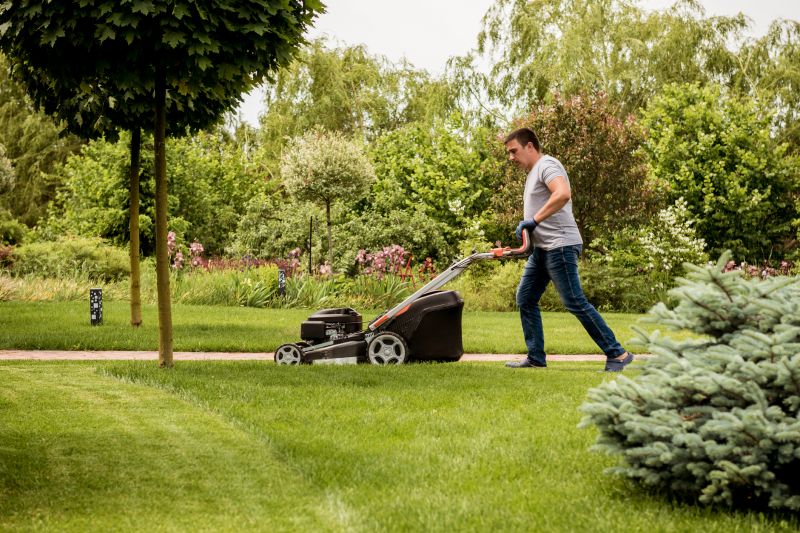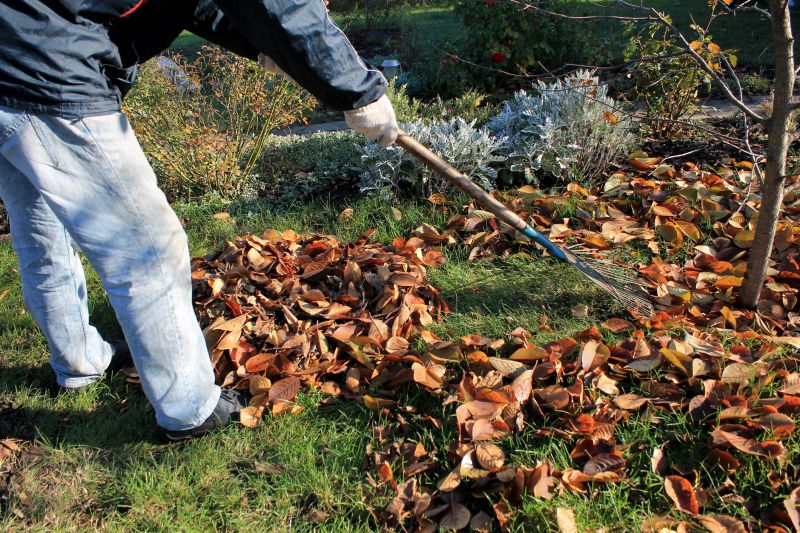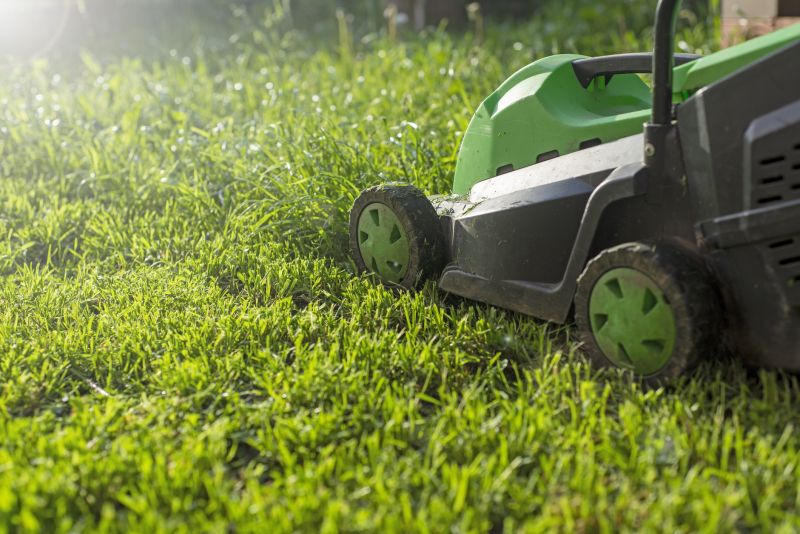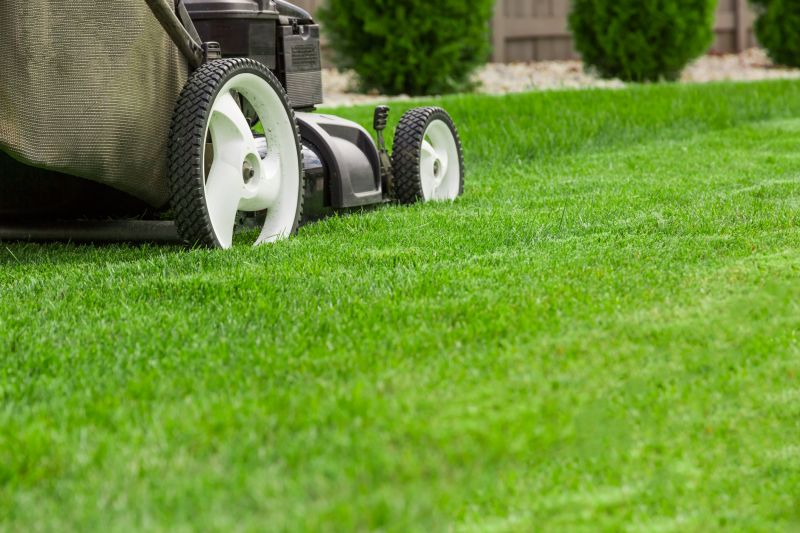Optimal Lawn Mowing Timing Guide
Understanding the best time to mow a lawn is essential for maintaining healthy grass growth. Proper timing can promote a lush, green yard and prevent issues such as disease and uneven growth. The ideal mowing schedule varies based on grass type, weather conditions, and seasonal changes.
Mowing begins when grass reaches approximately 3 inches in height. Cutting to about 2.5 inches helps promote healthy growth and removes winter dormancy.
During peak growing season, mowing frequency increases to once a week. Maintaining a height of 3 inches helps shade roots and conserve moisture.
Gradually lowering the mower height to around 2.5 inches prepares the lawn for winter. Avoid cutting more than one-third of the grass height at a time.
Postpone mowing during heavy rains to prevent soil compaction and turf damage. Wait until the grass is dry before mowing.

A mower trimming early-season grass in a vibrant yard.

A lush green lawn being mowed during warm weather.

A mower trimming a lawn in autumn colors.

Ways to make Lawn Mowings work in tight or awkward layouts.

Popular materials for Lawn Mowings and why they hold up over time.

Simple add-ons that improve Lawn Mowings without blowing the budget.
| Season | Recommended Mowing Height |
|---|---|
| Spring | 2.5 to 3 inches |
| Summer | 3 inches |
| Fall | 2.5 inches |
| Winter | No mowing |
| Rainy periods | Postpone mowing |
Consistent mowing at appropriate heights encourages dense, healthy turf. Proper timing reduces stress on grass and minimizes the risk of pests and disease. Adjusting mowing schedules based on weather and growth rates ensures a vibrant, resilient lawn.
